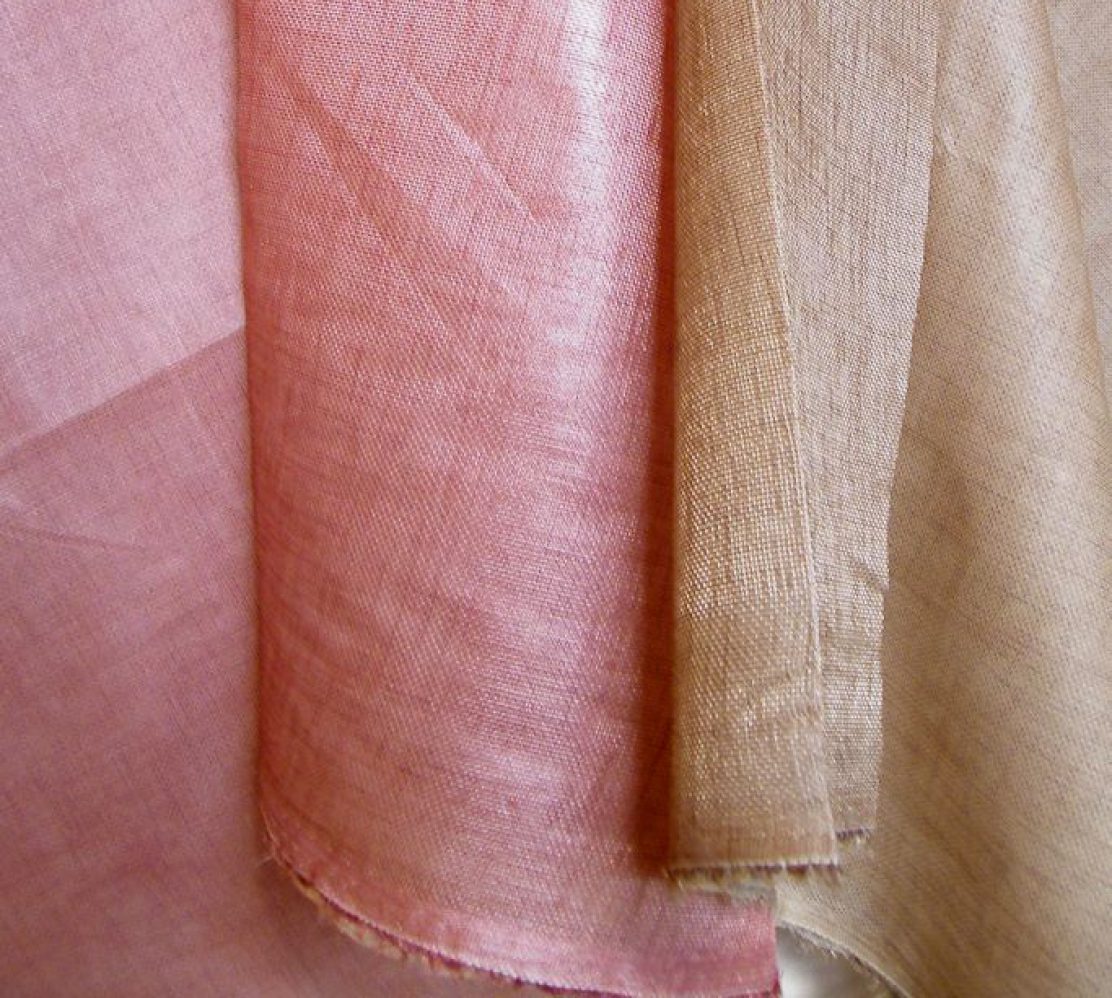Pattern Preparation continued…
Tissue paper being rather fragile, I decided to take a few precautions and get the pinned tissue pattern to lie as flat as possible before I try it on.
Initially I folded back all the clipped curved edges – neckline and armhole. This also helped me see better when evaluating the fit, especially as gift wrap tissue paper isn’t as translucent as the Big4 pattern paper.
This also helped me see better when evaluating the fit, especially as gift wrap tissue paper isn’t as translucent as the Big4 pattern paper.
Actually, I ended up cut these critters off altogether since they were flapping about getting in the way. They’re not particularly useful during tissue fitting anyway as the sleeve isn’t pinned to the bodice. I also found that it was easier to add new sheet of tissue if I needed to extend upward and outward. Taping clipped curve seam allowance back together was more effort and less accurate. When I’m ready to move on to muslin fitting or fit as you sew, I can always add the seam allowance back then. Or use Hollie’s Seam Allowance Guide like all the Burda sewers do.
Next I creased all the dart lines before pinning the darts together. Once the darts have been pinned, I open them up and finger press to ensure they spread out as much as possible. This is so that I can get a more accurate gauge of width & length without having to pull the tissue too much while trying it on.
Here’s what the pinned tissue pattern looks like:
Fitting Preparation:
Tissue fitting yourself is never going to be easy. Especially if your eyesight’s going and going like me. So I had to use some visual aids. I folded an Uniqlo camisole in half lengthwise, matched the side seams, then pinned small safety pins along the CF & CB folded edge to make it easier to see CF & CB. When I put it on I then use my finger to check that these lines align with my spine and CF. I used a chain to establish the neck line and 1/2″ elastic for the waist line.
Next, the all important shoulder. Now this is where it gets clear as mud. My knowledge of anatomy is as good as most people’s knowledge of world geography! Where exactly is the shoulder point?
Books and articles mention it as if it’s obvious. It’s not. My shoulder curves. There isn’t a hard angle that’s obviously the shoulder point. Instruction to find the “pivot point”, or “end of a flat bone”, or “top of a fitted, set-in sleeve cap”, or “dent when you lift your arm at right angle to the side of your body” were all of no use.
The whole joint moves – there is no one point of pivot. And what flat bone – they all feel rounded to me. Using RTW as guide is like asking bankers to set the Libor Rate – they all quote what suits them, how do you know which one is correct. And the dent, which dent – I got two!!!??? }:-

In the end I put a dot on both. Just in case. And this is what I end up with:
From the front you can see the yellow dot seems a bit too far in while the end red dot seems to be too far out. I’m inclined to go with the yellow dot. I don’t want sleeves that look like men’s suit jackets. I still feel self-conscious about the width of my shoulder, even if I’m officially no longer an inverted triangle.
BTW my other half would later claim that the shoulder point is in fact in between these two dents – ie between the yellow and the outer red dot.
What do you think? Am I fitting with the wrong goal post? What’s your experience of fitting the shoulder area?
Next time on the FFRP Odyssey…
Following the fit evaluation trail. (Or is that trial?) For now, time for zzzzzzzzz…..again.














One suggestion I read somewhere for determining where your shoulder point was – lay a ruler flat side down starting at your neck, along the top of your shoulder and note where it no longer contacts you shoulder.
Great tip! According to this my other half is right. It’s somewhere between the two dents I can see when I hold my arm out. I’ll be using that going forward and see how it feels.
Thanks for sharing!